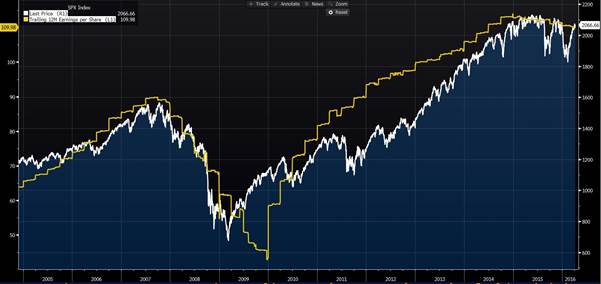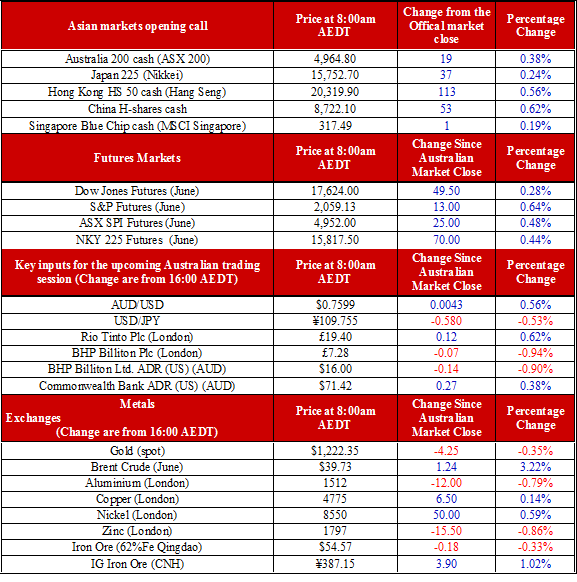Catalysts for change: part two – earnings growth
It’s going to be a busy month with US earnings season beginning next week, and in earnest the week after, the Australian bank earnings season will be three weeks away.
This is why earnings are my second catalyst for change.
Earnings per share says it all
Overlaying a chart of the S&P versus earnings per share (EPS) actuals, EPS has lead the market the majority of the time barring the GFC and the height of 2007 bull market. What’s catching my attention is that EPS is in rapid decline yet the S&P has had no response to the bottom up change.
Of the three EPS decline cycles in the modern era (1991, 2000 and 2008), EPS has lead the S&P on average by two and half quarters. Currently EPS and the S&P are at parity. If in the coming earnings season EPS crosses below the S&P, it will be the first time since 2008 this has happened and it will also be the first time since 2008 that there has been four quarters of negative earnings growth.

Earnings expectations for 2016 in the US doesn’t paint a rosy picture either, with both the first and second quarters expected to decline. This would suggest 2015/16 could be worse than the slowdown in 1991, on par with the dot.com bubble in 2000 and may even surpass this with a third quarter of declines at the end of the year.
In Australia EPS growth has been stuck in a state of flux since 2004 – it was fluctuating even at the back end of the mining boom in 2006 and 2007. However, it has largely been ignored, as the ASX tends to concentrate on bottom line growth in net profit; the catch here is over the past four financial years NPAT growth has been down to capex refinements rather than sustained earnings expansion which is unsustainable.
The banks are one of the clearest examples of this. Cash earnings have been positively impacted by the housing-led recovery since 2013 but it has also been down to bad and doubtful debt provisioning hitting record lows, employment freezes and cost out in non-core banking, which is coming to an end. Market pricing in the banks over the past month illustrates that the market believes the mid-single digit cash earnings expansion over the past three to four years is coming to end.
Why earnings are a catalyst is because under normal periods of EPS declines, government and central banks would step in to stimulate the economy and moderate the slowdowns. This time around, central banks are at the end of their existing stimulus programs.
The US has only avoided recessions in the past 75 years when US earnings have declined by two quarters or more, due to the Fed stepping in with stimulus. What happens now if the cupboard is bare?

